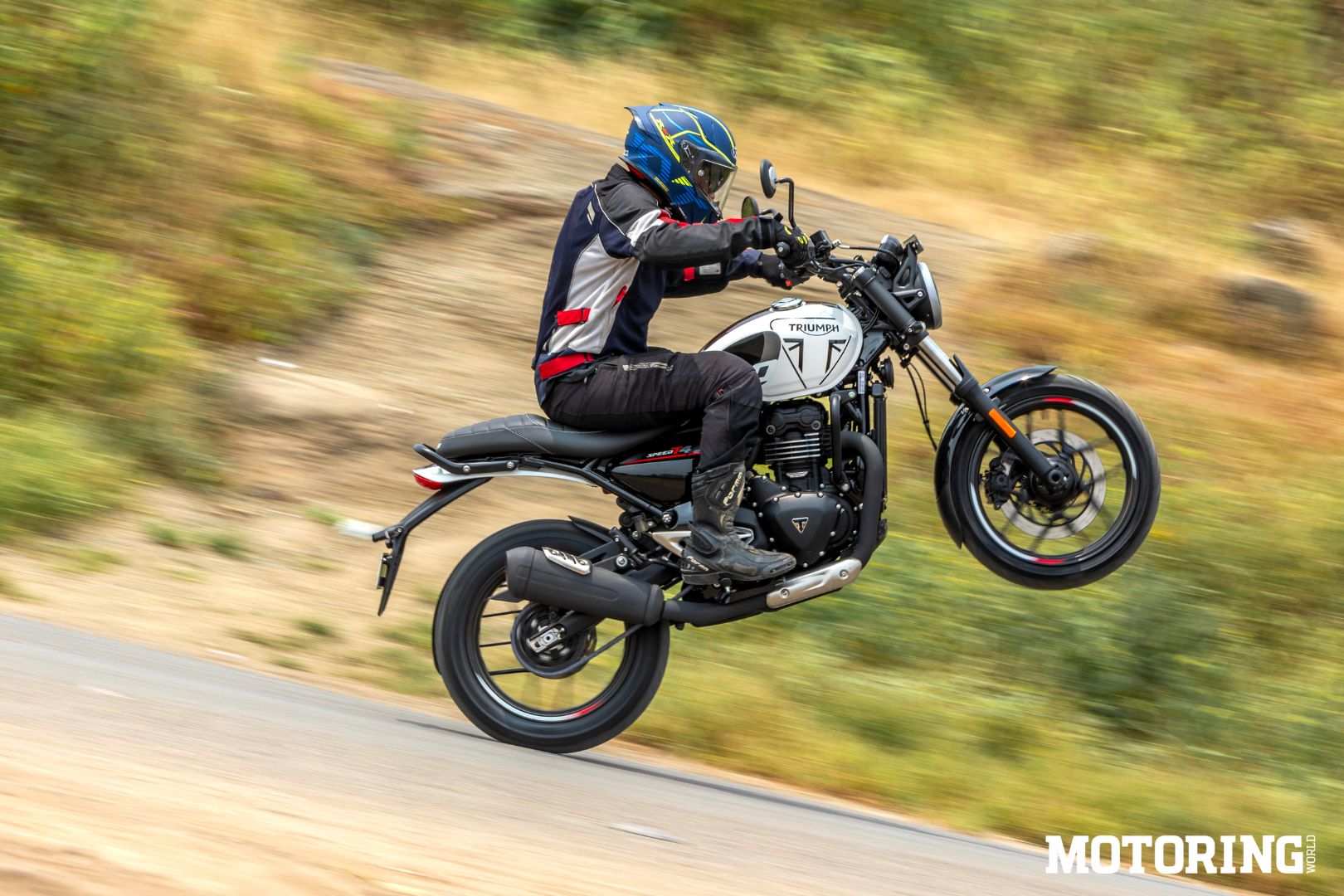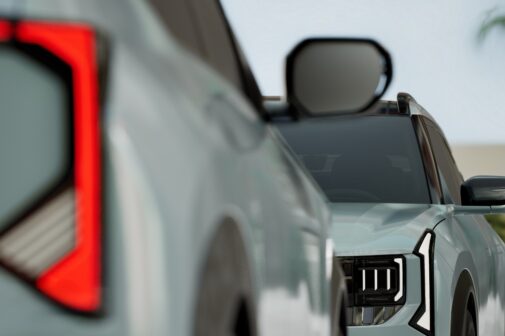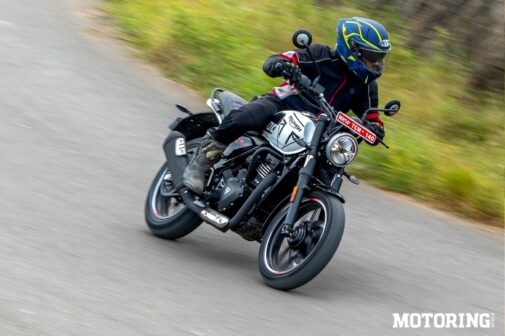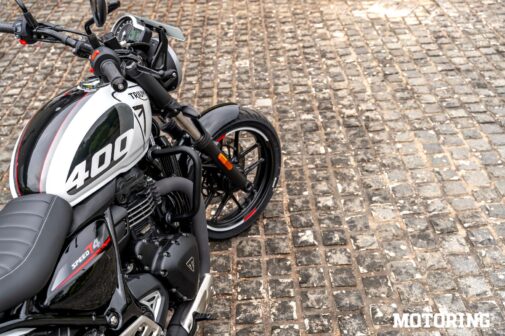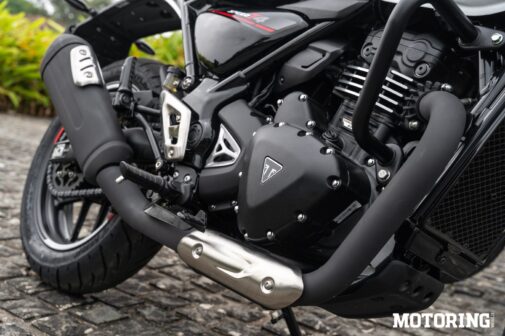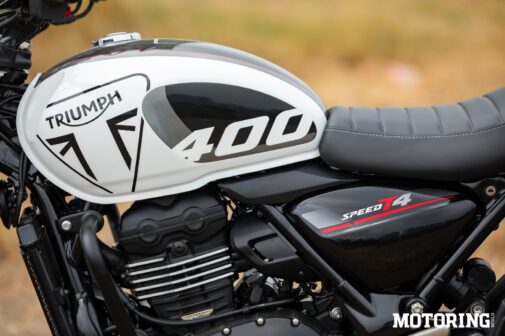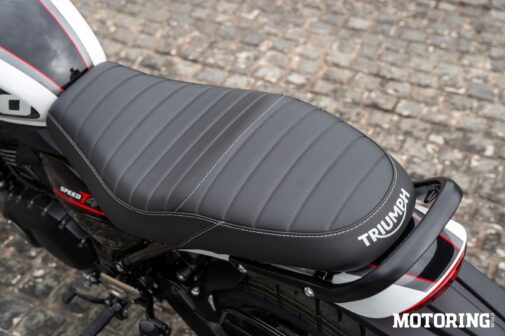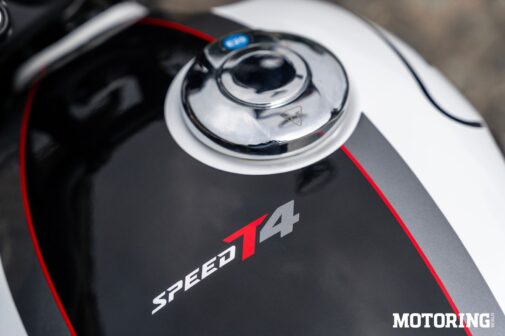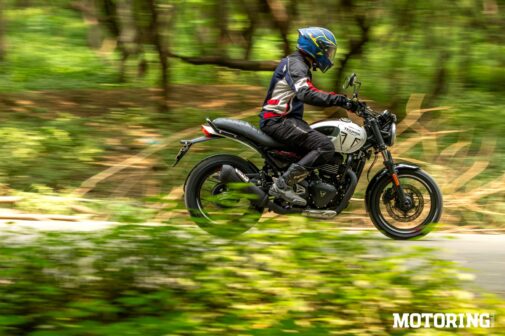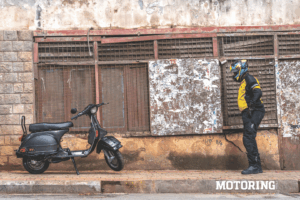I was initially puzzled when I heard that Triumph had launched a version of the Speed with a detuned engine. I mean, the motorcycle didn’t feel like it needed anything more, and surely not anything less, but here it was, a toned-down variant for the masses. A little over a year since it launched the Speed 400, which really shook up the market, Triumph is back with a model that is even more affordable. But with the tag of affordability, have there been compromises to what made the motorcycle as fun as it was?
To figure all of that out, we went to Akurdi to ride the all-new Speed T4 and get a good gauge on exactly how the changes affect the motorcycle. The first thing that came to my mind when I saw it in the flesh was that the new graphics and colours were stunning. Secondly, the T4 looked almost as premium as the Speed 400, sans the golden USD fork, the cast aluminium parts, and the brushed metal exhaust. I would still have preferred the brushed metal exhaust, though, truthfully speaking. The other parts, like the conventional telescopic fork, the hydroformed steel handlebar, and the other steel components, didn’t seem out of place at all.
Talking about the changes that aren’t jarringly obvious, the seat profile has been changed so that riders are able to reach the ground comfortably, along with better cushioning for the pillion. The brake pads used are more affordable organic pads, and the front brake calliper is now an axial unit. The tyres have been replaced by MRF Nylogrip Zappers, and while the front tyre size remains the same, the rear is now a 140/70-R17 setup. The most significant change, though, is the engine tuning. Going down from 39.5 bhp and 3.82 kgm of torque on the Speed 400 to figures of 30.6 bhp at 7000 rpm and 3.67 kgm at 5000 rpm is pretty significant, and so is switching to a cable-operated throttle.
How does it feel now? In terms of performance, the power delivery on the T4 feels more gradual when compared to the slightly bratty feel of the Speed 400. This is good, considering that the bike feels more composed now in traffic, and, according to Triumph, this has also resulted in better fuel efficiency. The combination of the new tyres and brakes, though, isn’t as confidence-inducing as the setup on the Speed 400. I found myself continuously trying to hold back my enthusiasm, lest I find myself sprawled out on the tarmac. Otherwise, with the changes made to the trail angle considering the lengthened wheelbase, the bike still maintains most of the handling and flickability, as on the Speed 400.
Triumph has made an already compact motorcycle feel even more so by moving the handlebar closer and the seat profile slimmer. That makes it more city-friendly, but it takes a hit on the touring comfort end. The rear suspension damping is stiff, mainly because it has been reworked for a higher payload, but as a solo rider, I could feel all the bumps and undulations travel right up my spine. The front suspension feels pretty good in contrast, soaking up most irregularities in the road.
Overall, while you can’t deny that there have been a few cost-cutting changes, the motorcycle on the whole is a decently refined product altogether, which feels immediately distinguishable from the Speed 400, and that’s not a bad thing. For someone interested in making the shift from a smaller commuter motorcycle, the Speed T4 feels welcoming enough to open up their perspective while still being something that is affordable to the general public.
MOTODATA
Triumph Speed T4POWERTRAIN
Displacement:
Max Power:
Max Torque:
Transmission:
398cc, single
30.57 bhp@7000 rpm
3.67 kgm@5000 rpm
6-speed
CHASSIS
Type: Tubular steel frame
BRAKES
F/R: 300-mm disc / 230-mm disc
TYRES
F/R: 110/70-17 / 140/70-17
DIMENSIONS
L/W/H (mm):
Wheelbase:
Ground Clearance:
Seat height:
Kerb Weight:
Fuel Capacity:
NA
1406 mm
170 mm
806 mm
180 kg
13 litres
PRICE
Rs 2.17 lakh (ex-showroom)





